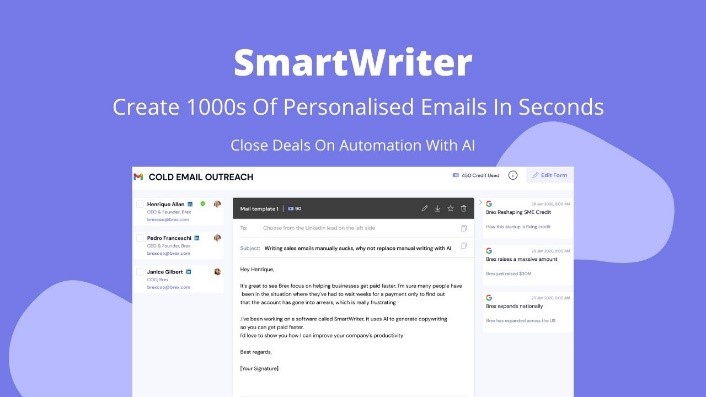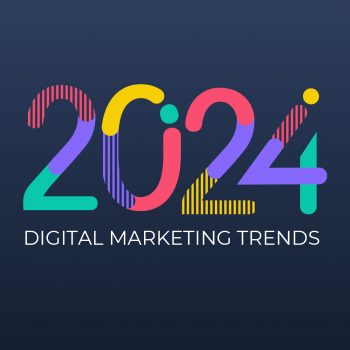
Top 10 AI Marketing Tools In 2024
- On 25/01/2024
- AI, AI marketing tools, AI tools, Artificial Intelligence, Automation, Digital marketing tool, Digital-marketing, marketing, Marketing tools, SEO tools
More and more enterprises are leveraging AI marketing tools to gain a competitive advantage, tapping into time-saving, audience insights, data-driven decisions, revenue growth, and personalization. The current landscape showcases a myriad of AI tools aiding in text content generation, programmatic SEO, CRM, email campaigns, writing assistance, conversational AI, content repurposing, SEO optimization, graphic design, and predictive analytics. The adoption of AI innovations is necessary for achieving notable business growth.
As companies and marketing teams race to incorporate the latest AI capabilities, the surge in generative AI is transforming workflows across the whole digital marketing industry. As the use of AI in marketing evolves, certain tried-and-true tools remain essential for marketers.
Advantages of AI Marketing Tools:
1. Time Savings: Streamline processes for enhanced efficiency.
2. Audience Insights: Understand customer trends and behaviors for targeted campaigns.
3. Data-Driven Decision-Making: Make informed choices about future strategy.
4. Revenue Growth: Drive business success through optimized strategies.
5. Personalization: Create tailored consumer experiences.
Top 10 AI Marketing Tools:
According to Harvard Business Review, among a company’s functions, marketing stands to gain the most from artificial intelligence. So, let’s delve into the top 10 AI tools for marketing in 2024:
- Jasper

– Use: Text content
– How it works: Jasper AI, powered by NLP algorithms, generates high-quality text content for blog posts, social media, and email marketing. Ideal for scaling content marketing efforts.
– Strengths: Save time and money, improve ad performance, and generate more leads and sales.
– Limitations: May produce repetitive content with insufficient data.
- AdCreative.ai

– Use: Creatives design
– How it works: Generate conversion-focused ad creatives and utilize AI for product photoshoots.
– Strengths: Simplifying keyword research, on-page SEO editing.
– Limitations: Sometimes repetitive or inconsistent.
- HubSpot

– Use: Customer Relationship Management (CRM)
– How it works: HubSpot’s CRM uses AI to interpret customer data, offering actionable insights for personalized marketing campaigns. Automation includes lead scoring, predicting customer behavior, and AI-driven content features.
– Strengths: Strengthening customer relationships with targeted content.
– Limitations: Price and lack of point solutions may not suit smaller businesses.
- SmartWriter.ai

– Use: Creating email campaigns
– How it works: SmartWriter.ai uses machine learning to analyze customer preferences, recommending personalized email content to increase open rates, click-through rates, and conversions.
– Strengths: Enhancing the effectiveness of email marketing campaigns.
– Limitations: Lacks API functionality, which could streamline processes.
- Grammarly

– Use: Writing aid
– How it works: Grammarly’s AI-driven suggestions refine and strengthen written communication across various platforms, ensuring error-free and engaging content.
– Strengths: Polishing content to avoid typos.
– Limitations: Free version only corrects spelling and grammar, lacks additional features.
- Drift

– Use: Conversational AI (Chatbots)
– How it works: Drift’s Conversational AI uses chatbots to engage website visitors in real time, answering queries and guiding them to relevant content.
– Strengths: Providing instant chat support, capturing leads.
– Limitations: AI may occasionally misidentify prospect information.
- Looka

– Use: Logo and brand design
– How it works: Looka merges your design choices with AI to craft logos you’ll adore. After obtaining your logo, leverage the Brand Kit for 300+ design templates.
– Strengths: Create a unique logo in just minutes, then build your brand identity.
– Limitations: Doesn’t have the most original or unique logo ideas.
- Surfer SEO

– Use: SEO
– How it works: Surfer SEO’s AI-driven approach to SEO optimization eliminates guesswork, providing data-backed optimizations to align content with search engine preferences.
– Strengths: Climbing search rankings for important keywords.
– Limitations: Content writing suggestions may not always be brand-specific.
- Designs.ai

– Use: Graphic design
– How it works: Designs.ai offers AI-powered design templates for social media posts, banners, and infographics, catering to marketers without graphic design expertise.
– Strengths: Creating visually appealing content.
– Limitations: AI-powered voice features may lack natural human intonation.
- Pecan AI

– Use: Predictive analytics
– How it works: Pecan AI specializes in AI-powered predictive analytics for marketers, optimizing strategies, campaigns, and revenue.
– Strengths: Accurately predicting customer behavior, optimizing marketing budgets and campaigns.
– Limitations: Most attractive to B2C marketing teams, but still relevant for many B2B teams.
The synergy between humans and AI in marketing is undeniably transformative. As showcased by the top AI tools mentioned, these technologies not only enhance efficiency but also empower marketers to delve into realms of creativity and strategic decision-making previously unattainable. By embracing AI, businesses can leverage data-driven insights, streamline processes, and elevate the overall customer experience. It’s not about AI replacing human input; rather, it’s about the harmonious collaboration between human intuition and AI capabilities, leading to unparalleled success in the dynamic landscape of marketing.




